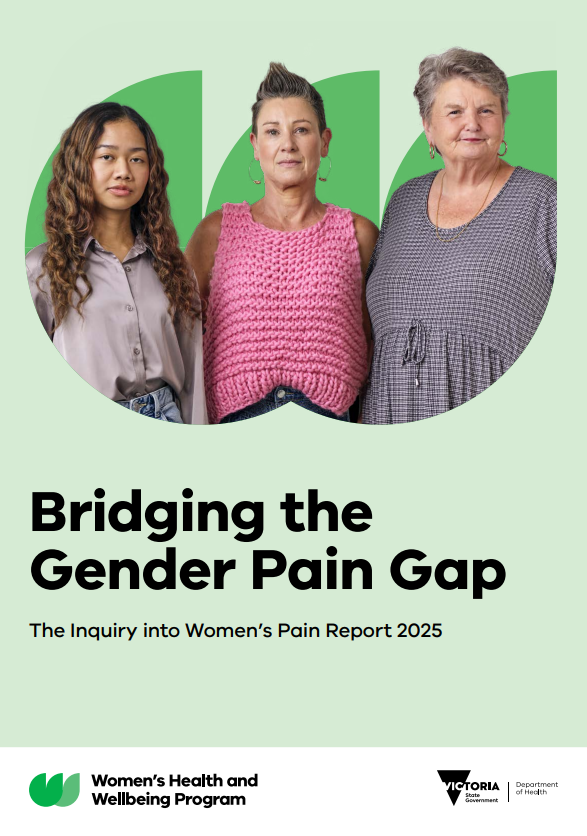
How to access e-books
 Use your ANZCA college ID (or staff username) and password to access library e-resources.
Use your ANZCA college ID (or staff username) and password to access library e-resources.
 Having trouble logging into e-resources? Try emptying your browser cache, closing and reopening your browser and trying again.
Having trouble logging into e-resources? Try emptying your browser cache, closing and reopening your browser and trying again.
 Forgotten your ANZCA password? Try resetting your password using the "Forgot Password?" link and/or messaging the "Technical support" via the college contact form
Forgotten your ANZCA password? Try resetting your password using the "Forgot Password?" link and/or messaging the "Technical support" via the college contact form
 Can't find your book online? Borrow a print copy or request a chapter via our article request service
Can't find your book online? Borrow a print copy or request a chapter via our article request service
 Experiencing difficulties, or need help accessing e-books? Contact the Library
Experiencing difficulties, or need help accessing e-books? Contact the Library
 For further information about searching and accessing e-books, see the E-books guide
For further information about searching and accessing e-books, see the E-books guide
Borrowing books
 ANZCA library provides access to a large range of print items, specialising in anaesthesia and pain medicine-related titles.
ANZCA library provides access to a large range of print items, specialising in anaesthesia and pain medicine-related titles.
 For further information about requesting books, see the Borrowing books page
For further information about requesting books, see the Borrowing books page

 Acute Pain Management: Scientific Evidence, 5e
by
Acute Pain Management: Scientific Evidence covers a wide range of clinical topics, combining a review of the best available evidence for acute pain management with current clinical and expert practice.
Acute Pain Management: Scientific Evidence, 5e
by
Acute Pain Management: Scientific Evidence covers a wide range of clinical topics, combining a review of the best available evidence for acute pain management with current clinical and expert practice.
 Acute Pain Management: Scientific Evidence, 5e
by
Acute Pain Management: Scientific Evidence covers a wide range of clinical topics, combining a review of the best available evidence for acute pain management with current clinical and expert practice.
Acute Pain Management: Scientific Evidence, 5e
by
Acute Pain Management: Scientific Evidence covers a wide range of clinical topics, combining a review of the best available evidence for acute pain management with current clinical and expert practice.
 Assessing Pain and Communication in Disorders of Consciousness
by
This book provides clinicians with a guide to recent developments in research on pain perception and assessment, and the detection of consciousness and communication in patients with disorders of consciousness (DOC). With contributions from leading global researchers, the book gives an overview of issues concerning the assessment of pain. It also covers the development of suitable tools both to improve pain management and to detect consciousness and communication in these patients, to influence their prognosis and treatment, and their quality of life.
Assessing Pain and Communication in Disorders of Consciousness
by
This book provides clinicians with a guide to recent developments in research on pain perception and assessment, and the detection of consciousness and communication in patients with disorders of consciousness (DOC). With contributions from leading global researchers, the book gives an overview of issues concerning the assessment of pain. It also covers the development of suitable tools both to improve pain management and to detect consciousness and communication in these patients, to influence their prognosis and treatment, and their quality of life.
 At the Edge of Being: The Aporia of Pain
by
This book represents a challenge to the influential medico-political discourse that seeks to classify and manage chronic pain as if it were a disease in its own right, while at the same time preserving its status as a symptom. The chapters in this volume confront this view with timely reminders that pain as lived experience remains an elusive and puzzling phenomenon (an APORIA) that cannot be better understood by putting aside its phenomenology and simplifying what is left to fit a metaphorical pigeon-hole as a distinct biomedical disease entity.
At the Edge of Being: The Aporia of Pain
by
This book represents a challenge to the influential medico-political discourse that seeks to classify and manage chronic pain as if it were a disease in its own right, while at the same time preserving its status as a symptom. The chapters in this volume confront this view with timely reminders that pain as lived experience remains an elusive and puzzling phenomenon (an APORIA) that cannot be better understood by putting aside its phenomenology and simplifying what is left to fit a metaphorical pigeon-hole as a distinct biomedical disease entity.
 Bridging the Gender Pain Gap: The Inquiry into Women’s Pain Report 2025
by
The Inquiry into Women’s Pain, the first of its kind in Australia, was conducted between January and October 2024, engaging thousands of Victorian women and girls, carers, clinicians, peak bodies, and researchers. It provided a platform for women and girls with lived experiences of pain to be heard, and informed actionable recommendations for healthcare policy and practice, and improved care models.
Bridging the Gender Pain Gap: The Inquiry into Women’s Pain Report 2025
by
The Inquiry into Women’s Pain, the first of its kind in Australia, was conducted between January and October 2024, engaging thousands of Victorian women and girls, carers, clinicians, peak bodies, and researchers. It provided a platform for women and girls with lived experiences of pain to be heard, and informed actionable recommendations for healthcare policy and practice, and improved care models.
 Challenging Topics in Neuroanesthesia and Neurocritical Care
by
This book focuses on controversial issues in neuroanesthesia and neurocritical care that in general have been subjected to insufficient professional scrutiny. The book is in three parts, the first of which is devoted to topics relating to traumatic brain and spinal cord injury, such as brain tissue oxygenation, the role of biomarkers, and diagnosis of brain death. Aspects of airway and pain management are then addressed, covering, for example, airway management in an emergency setting, airway evaluation in the edentulous patient, and pain management in neurosurgery and after craniotomy. The final part of the book considers a wide range of other challenging subjects in the field of neuroanesthesia and neurocritical care. Throughout, much information is provided on the latest, state of the art management. The authors are acknowledged experts in the issues they discuss, and the book will be of interest for graduate and undergraduate students, residents, neuroanesthetists, neurointensivists, emergency medicine residents and specialists, fellows in neurocritical care and all those directly involved in the perioperative care of patients with head and neck pathology.
Challenging Topics in Neuroanesthesia and Neurocritical Care
by
This book focuses on controversial issues in neuroanesthesia and neurocritical care that in general have been subjected to insufficient professional scrutiny. The book is in three parts, the first of which is devoted to topics relating to traumatic brain and spinal cord injury, such as brain tissue oxygenation, the role of biomarkers, and diagnosis of brain death. Aspects of airway and pain management are then addressed, covering, for example, airway management in an emergency setting, airway evaluation in the edentulous patient, and pain management in neurosurgery and after craniotomy. The final part of the book considers a wide range of other challenging subjects in the field of neuroanesthesia and neurocritical care. Throughout, much information is provided on the latest, state of the art management. The authors are acknowledged experts in the issues they discuss, and the book will be of interest for graduate and undergraduate students, residents, neuroanesthetists, neurointensivists, emergency medicine residents and specialists, fellows in neurocritical care and all those directly involved in the perioperative care of patients with head and neck pathology.
 Comprehensive Pain Management in the Rehabilitation Patient
by
Whether patients are in the acute or sub-acute phase of treatment at a rehabilitation hospital or skilled nursing facility or in the chronic phase of treatment at an outpatient clinic, the approaches to adequate pain control explored in this volume can dictate the success of rehabilitation. The treatment of pain in rehabilitation patients varies depending on the etiology and diagnosis.
Comprehensive Pain Management in the Rehabilitation Patient
by
Whether patients are in the acute or sub-acute phase of treatment at a rehabilitation hospital or skilled nursing facility or in the chronic phase of treatment at an outpatient clinic, the approaches to adequate pain control explored in this volume can dictate the success of rehabilitation. The treatment of pain in rehabilitation patients varies depending on the etiology and diagnosis.
 Core Curriculum for Professional Education in Pain, 3e
by
Core Curriculum for Professional Education in Pain, 3e
by
 Educating Together, Improving Together: Harmonizing Interprofessional Approaches to Address the Opioid Epidemic
by
The United States is in the midst of an urgent and complex opioid crisis. To address how education and training can more effectively respond to this crisis, we must have a better understanding of problems in practice?or professional practice gaps?for health professionals and teams in practice. A coordinated response requires identifying and addressing professional practice gaps (PPGs) related to pain management, opioid use disorder, and other substance use disorder (SUD) care, as well as integrating evidence-based best practices into health professional education and training curricula across the continuum from undergraduate training into post-graduate continuing education This Special Publication presents two information-gathering efforts to assess persisting PPGs pertaining to pain management and SUD care and to better understand the current health professional education environment: the first is a comprehensive literature review, and the second is a survey of the regulatory landscape.
Educating Together, Improving Together: Harmonizing Interprofessional Approaches to Address the Opioid Epidemic
by
The United States is in the midst of an urgent and complex opioid crisis. To address how education and training can more effectively respond to this crisis, we must have a better understanding of problems in practice?or professional practice gaps?for health professionals and teams in practice. A coordinated response requires identifying and addressing professional practice gaps (PPGs) related to pain management, opioid use disorder, and other substance use disorder (SUD) care, as well as integrating evidence-based best practices into health professional education and training curricula across the continuum from undergraduate training into post-graduate continuing education This Special Publication presents two information-gathering efforts to assess persisting PPGs pertaining to pain management and SUD care and to better understand the current health professional education environment: the first is a comprehensive literature review, and the second is a survey of the regulatory landscape.
 Good Medical Practice: A Code of Conduct for Doctors in Australia
by
Good medical practice (the code) describes what is expected of all doctors registered to practise medicine in Australia. It sets out the principles that characterise good medical practice and makes explicit the standards of ethical and professional conduct expected of doctors by their professional peers and the community.
Good Medical Practice: A Code of Conduct for Doctors in Australia
by
Good medical practice (the code) describes what is expected of all doctors registered to practise medicine in Australia. It sets out the principles that characterise good medical practice and makes explicit the standards of ethical and professional conduct expected of doctors by their professional peers and the community.
 Groin Pain Syndrome: A Multidisciplinary Guide to Diagnosis and Treatment
by
This book provides accurate descriptions of the injuries responsible for groin pain, which tend to occur in association with particular sports. The approach is multidisciplinary, ensuring that the book will be of broad appeal, and the focus is especially on epidemiology, etiology, and possible treatment options. Throughout, care has been taken to depict the state of the art in this constantly evolving field. A new classification of groin pain syndrome is presented, and the coverage encompasses hip, visceral, tendon/muscle, bone, and neurologic pathology. In addition, guidance is provided in selection of the rehabilitation program that will best meet the patient's needs, taking into account individual circumstances. Groin pain is among the most prevalent lower limb symptoms. The pain may occur immediately after an injury or develop gradually and is often exacerbated by continued use of the injured area. In presenting the latest knowledge on groin pain syndrome and its management, this book will be of value to a range of practitioners, including sports medicine specialists, primary care providers, urologists, orthopedists, and physiatrists.
Groin Pain Syndrome: A Multidisciplinary Guide to Diagnosis and Treatment
by
This book provides accurate descriptions of the injuries responsible for groin pain, which tend to occur in association with particular sports. The approach is multidisciplinary, ensuring that the book will be of broad appeal, and the focus is especially on epidemiology, etiology, and possible treatment options. Throughout, care has been taken to depict the state of the art in this constantly evolving field. A new classification of groin pain syndrome is presented, and the coverage encompasses hip, visceral, tendon/muscle, bone, and neurologic pathology. In addition, guidance is provided in selection of the rehabilitation program that will best meet the patient's needs, taking into account individual circumstances. Groin pain is among the most prevalent lower limb symptoms. The pain may occur immediately after an injury or develop gradually and is often exacerbated by continued use of the injured area. In presenting the latest knowledge on groin pain syndrome and its management, this book will be of value to a range of practitioners, including sports medicine specialists, primary care providers, urologists, orthopedists, and physiatrists.
 Guide to Pain Management in Low-Resource Settings
by
The Guide to Pain Management in Low-Resource Settings is intended to support health care providers in low-resource settings. Chapters were written by a multidisciplinary and multinational team of authors. Practitioners in settings with limited resources will benefit from easy-to-read information about simple and cost-effective approaches that can provide maximum effects in managing pain in their patients.
Guide to Pain Management in Low-Resource Settings
by
The Guide to Pain Management in Low-Resource Settings is intended to support health care providers in low-resource settings. Chapters were written by a multidisciplinary and multinational team of authors. Practitioners in settings with limited resources will benefit from easy-to-read information about simple and cost-effective approaches that can provide maximum effects in managing pain in their patients.
 Inquiry into Women’s Pain: Consultation Methodology
by
This document outlines the methodology applied to the analysis of the data that fed into the Inquiry into Women’s Pain and subsequent ‘Bridging the Gender Pain Gap’ report. It includes details of the types of data collected as part of the Inquiry into Women’s Pain and how those data were collected, analysed, interpreted and reported.
Inquiry into Women’s Pain: Consultation Methodology
by
This document outlines the methodology applied to the analysis of the data that fed into the Inquiry into Women’s Pain and subsequent ‘Bridging the Gender Pain Gap’ report. It includes details of the types of data collected as part of the Inquiry into Women’s Pain and how those data were collected, analysed, interpreted and reported.
 Muscles, Nerves, and Pain: A Guide to Diagnosis, Pain Concepts, and Therapy, 2e
by
This book summarizes the latest scientific information on pain states and their mechanisms. It provides a deeper understanding of the different pain conditions and allows physicians to form strategies for better pain therapy. The second edition includes more graphs, tables, and illustrations. It is updated with the current and dynamically expanding knowledge on the therapy of several disease states and explains in more detail the processing of pain in the central nervous system.
Muscles, Nerves, and Pain: A Guide to Diagnosis, Pain Concepts, and Therapy, 2e
by
This book summarizes the latest scientific information on pain states and their mechanisms. It provides a deeper understanding of the different pain conditions and allows physicians to form strategies for better pain therapy. The second edition includes more graphs, tables, and illustrations. It is updated with the current and dynamically expanding knowledge on the therapy of several disease states and explains in more detail the processing of pain in the central nervous system.
 Orofacial Pain Biomarkers
by
This book provides up-to-date information on all aspects of orofacial pain biomarkers, which are of evolving importance. The first section includes explanation of the neurobiological substrates underlying chronic orofacial pain and the potential role of biomarkers in diagnosis, prognosis, and treatment. Differences and similarities between saliva and serum biomarkers for pain are then explained, and assessment methods and statistical analyses used in evaluating biomarkers are considered. The main section of the book examines the contribution of clinical studies to the field of biomarkers for orofacial pain and discusses biomarkers for masticatory muscle pain, temporomandibular joint pain, neuropathic face pain, and autonomic nervous system involvement in trigeminal facial pain.
Orofacial Pain Biomarkers
by
This book provides up-to-date information on all aspects of orofacial pain biomarkers, which are of evolving importance. The first section includes explanation of the neurobiological substrates underlying chronic orofacial pain and the potential role of biomarkers in diagnosis, prognosis, and treatment. Differences and similarities between saliva and serum biomarkers for pain are then explained, and assessment methods and statistical analyses used in evaluating biomarkers are considered. The main section of the book examines the contribution of clinical studies to the field of biomarkers for orofacial pain and discusses biomarkers for masticatory muscle pain, temporomandibular joint pain, neuropathic face pain, and autonomic nervous system involvement in trigeminal facial pain.
 For a comprehensive list of titles, see: Pain medicine
For a comprehensive list of titles, see: Pain medicine
 Pain 2010 - An Updated Review: Refresher Course Syllabus
by
Pain 2010 – An Updated Review: Refresher Course Syllabus, based on sessions held at the 13th World Congress on Pain, 2010, in Montréal, covers pain research and treatment. Includes techniques (imaging, genetics, pain models), treatments (interventional, psychological, pharmacological), disorders (cancer pain, neuropathic pain, musculoskeletal pain, CRPS, orofacial pain, postoperative pain, abdominal/pelvic pain, back pain, paediatric pain), and drug development.
Pain 2010 - An Updated Review: Refresher Course Syllabus
by
Pain 2010 – An Updated Review: Refresher Course Syllabus, based on sessions held at the 13th World Congress on Pain, 2010, in Montréal, covers pain research and treatment. Includes techniques (imaging, genetics, pain models), treatments (interventional, psychological, pharmacological), disorders (cancer pain, neuropathic pain, musculoskeletal pain, CRPS, orofacial pain, postoperative pain, abdominal/pelvic pain, back pain, paediatric pain), and drug development.
 DSM-5-TR® Clinical Cases
by
DSM-5-TR Clinical Cases clarifies and discusses psychiatric diagnosis with a particular focus on how diagnoses have evolved from DSM-5. Designed for teachers, students, and clinicians, this book presents a broad range of patient vignettes that cover the diagnostic waterfront.
DSM-5-TR® Clinical Cases
by
DSM-5-TR Clinical Cases clarifies and discusses psychiatric diagnosis with a particular focus on how diagnoses have evolved from DSM-5. Designed for teachers, students, and clinicians, this book presents a broad range of patient vignettes that cover the diagnostic waterfront.
 DSM-5-TR® Handbook of Differential Diagnosis
by
The DSM-5-TR Handbook of Differential Diagnosis is the preeminent guide to differential diagnosis for both clinicians and students learning psychiatric diagnosis. Fully updated to reflect the recent Diagnostic and Statistical Manual of Mental Disorders, 5e, Text Revision (DSM-5-TR), this handbook includes two newly developed diagnostic trees (for dissociative symptoms and repetitive pathological behaviours). This indispensable guide offers a rich selection of diagnostic lenses through which to consider symptomatic presentations, grounded in the latest research and standards of practice. The clinician must have empathy, listening skills, the ability to identify symptoms and contextualize them, and a familiarity with the body of knowledge represented by DSM-5. The handbook offers an assortment of approaches to differential diagnosis, and a number of features designed to benefit clinicians in the exam room.
DSM-5-TR® Handbook of Differential Diagnosis
by
The DSM-5-TR Handbook of Differential Diagnosis is the preeminent guide to differential diagnosis for both clinicians and students learning psychiatric diagnosis. Fully updated to reflect the recent Diagnostic and Statistical Manual of Mental Disorders, 5e, Text Revision (DSM-5-TR), this handbook includes two newly developed diagnostic trees (for dissociative symptoms and repetitive pathological behaviours). This indispensable guide offers a rich selection of diagnostic lenses through which to consider symptomatic presentations, grounded in the latest research and standards of practice. The clinician must have empathy, listening skills, the ability to identify symptoms and contextualize them, and a familiarity with the body of knowledge represented by DSM-5. The handbook offers an assortment of approaches to differential diagnosis, and a number of features designed to benefit clinicians in the exam room.
 National Strategy for Health Practitioner Pain Management Education
by
The National Strategy for Health Practitioner Pain Management Education provides a blueprint for the future of pain education over the next five to 10 years with its underpinning values, principles, goals and detailed implementation plan. It articulates not only ‘what’ needs to be achieved, but ‘how’ we can achieve the desired goals in the most effective and resource-efficient way, to ensure a meaningful and positive impact for those in the community living with pain.
National Strategy for Health Practitioner Pain Management Education
by
The National Strategy for Health Practitioner Pain Management Education provides a blueprint for the future of pain education over the next five to 10 years with its underpinning values, principles, goals and detailed implementation plan. It articulates not only ‘what’ needs to be achieved, but ‘how’ we can achieve the desired goals in the most effective and resource-efficient way, to ensure a meaningful and positive impact for those in the community living with pain.
 National Strategy for Health Practitioner Pain Management Education: Implementation Guide
by
This Implementation Guide is a companion document to the National Strategy for Health Practitioner Pain Management Education and provides the key elements of the strategy, including a detailed ‘Implementation Plan’. It is recommended that the guide be read in conjunction with the main strategy document which provides essential background and contextual information.
National Strategy for Health Practitioner Pain Management Education: Implementation Guide
by
This Implementation Guide is a companion document to the National Strategy for Health Practitioner Pain Management Education and provides the key elements of the strategy, including a detailed ‘Implementation Plan’. It is recommended that the guide be read in conjunction with the main strategy document which provides essential background and contextual information.
 Acute Pain Management: Scientific Evidence, 5e
by
Acute Pain Management: Scientific Evidence covers a wide range of clinical topics, combining a review of the best available evidence for acute pain management with current clinical and expert practice.
Acute Pain Management: Scientific Evidence, 5e
by
Acute Pain Management: Scientific Evidence covers a wide range of clinical topics, combining a review of the best available evidence for acute pain management with current clinical and expert practice.
 Core Curriculum for Professional Education in Pain, 3e
by
Core Curriculum for Professional Education in Pain, 3e
by
 Opioids and Pain Relief
by
Opioid use for the alleviation of pain can prove problematic. Differing opinions within the medical community arise from the dual nature of these drugs. Despite universal recognition of the potent analgesic effects of opioids, many health care providers are reluctant to employ them - especially for chronic pain - due to the risk for addiction. Ample literature exists for opioid addiction, yet this volume stands alone in its examination of the history of opioid use for pain relief. It presents a balanced view of the topic by discussing both the benefits and risks of opioid use in pain treatment. International experts from the pain field examine from a historical perspective International experts from the pain field examine from a historical perspective the beneficial and detrimental consequences of opioid use in pain management. From medieval times to the Victorian era to the 21st century, these specialists offer unprecedented insights into understanding and appreciating the usefulness of these drugs. They remove the mythological shrouds surrounding opioid use and they identify objective criteria for incorporating opioids into pain treatment protocols. This volume enlightens and informs readers so that they may broaden and deepen their understanding of the subject.
Opioids and Pain Relief
by
Opioid use for the alleviation of pain can prove problematic. Differing opinions within the medical community arise from the dual nature of these drugs. Despite universal recognition of the potent analgesic effects of opioids, many health care providers are reluctant to employ them - especially for chronic pain - due to the risk for addiction. Ample literature exists for opioid addiction, yet this volume stands alone in its examination of the history of opioid use for pain relief. It presents a balanced view of the topic by discussing both the benefits and risks of opioid use in pain treatment. International experts from the pain field examine from a historical perspective International experts from the pain field examine from a historical perspective the beneficial and detrimental consequences of opioid use in pain management. From medieval times to the Victorian era to the 21st century, these specialists offer unprecedented insights into understanding and appreciating the usefulness of these drugs. They remove the mythological shrouds surrounding opioid use and they identify objective criteria for incorporating opioids into pain treatment protocols. This volume enlightens and informs readers so that they may broaden and deepen their understanding of the subject.
 Opioid Therapy for Pain: A Practical Clinical Guide
by
Opioid Therapy for Pain: A Practical Clinical Guide
by
 Practice Guidelines for Spinal Diagnostic and Treatment Procedures, 2e
by
Developed under the guidance of the SIS Standards Division and edited by Professor Nikolai Bogduk, internationally renowned and respected expert in clinical anatomy and spine pain, this comprehensive compendium on spine interventions is a must read for anyone performing interventional spine procedures. The book provides a summary of the current state of the evidence concerning each procedure, along with complete and detailed descriptions of the techniques used. The book is divided into five sections: Precepts, Cervical Procedures, Thoracic Procedures, Lumbar Procedures, and Sacral Procedures. The Precepts section includes chapters on sedation, intravenous lines, records, anticoagulants, and principles of radiofrequency neurotomy. The four procedure sections cover access and applications of cervical, thoracic, lumbar, and sacral procedures. Each chapter contains dozens of high quality radiographic images depicting step-by-step needle placement technique and demonstrating injectate flow patterns.
Practice Guidelines for Spinal Diagnostic and Treatment Procedures, 2e
by
Developed under the guidance of the SIS Standards Division and edited by Professor Nikolai Bogduk, internationally renowned and respected expert in clinical anatomy and spine pain, this comprehensive compendium on spine interventions is a must read for anyone performing interventional spine procedures. The book provides a summary of the current state of the evidence concerning each procedure, along with complete and detailed descriptions of the techniques used. The book is divided into five sections: Precepts, Cervical Procedures, Thoracic Procedures, Lumbar Procedures, and Sacral Procedures. The Precepts section includes chapters on sedation, intravenous lines, records, anticoagulants, and principles of radiofrequency neurotomy. The four procedure sections cover access and applications of cervical, thoracic, lumbar, and sacral procedures. Each chapter contains dozens of high quality radiographic images depicting step-by-step needle placement technique and demonstrating injectate flow patterns.
 Technical Manual and Atlas of Interventional Pain and Spine Procedures
by
Over four years, 85 top interventional pain experts, with centuries of combined experience, meticulously documented every step of cutting-edge, evidence-based techniques with exquisite, high-quality fluoroscopic, MRI, and cadaveric images.
Technical Manual and Atlas of Interventional Pain and Spine Procedures
by
Over four years, 85 top interventional pain experts, with centuries of combined experience, meticulously documented every step of cutting-edge, evidence-based techniques with exquisite, high-quality fluoroscopic, MRI, and cadaveric images.
Quick links
About ANZCA
Copyright © Australian and New Zealand College of Anaesthetists.